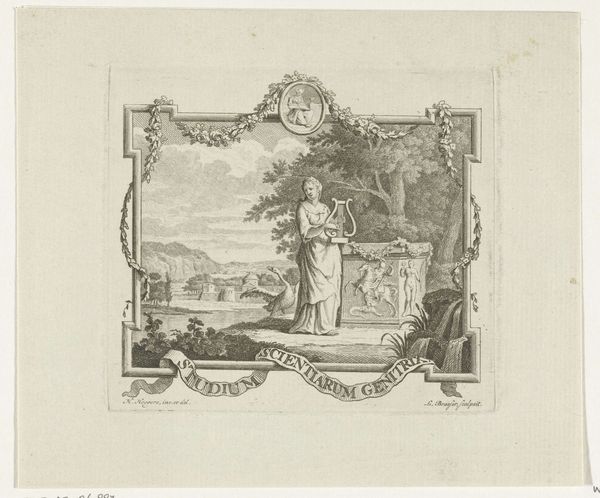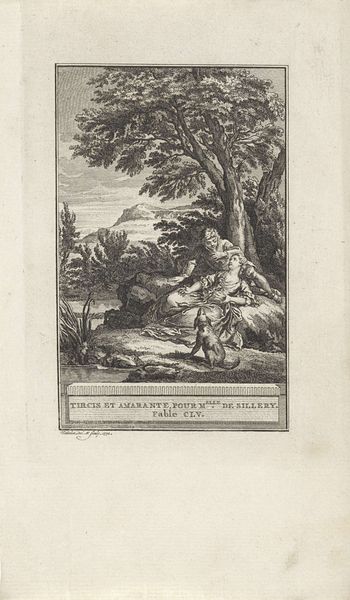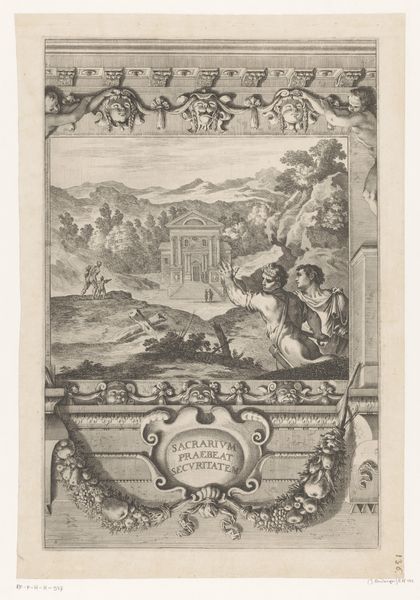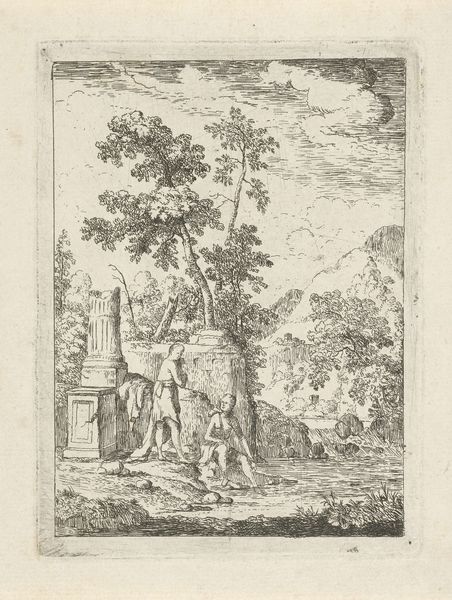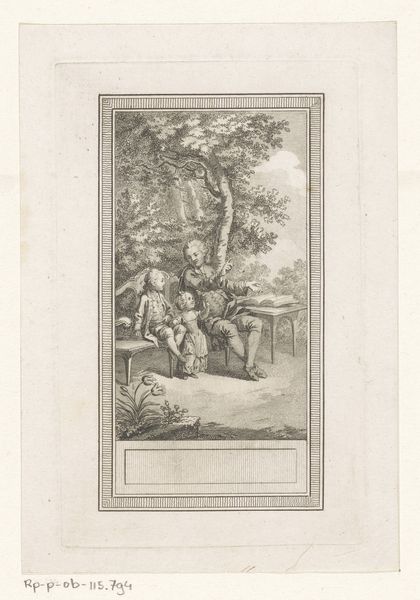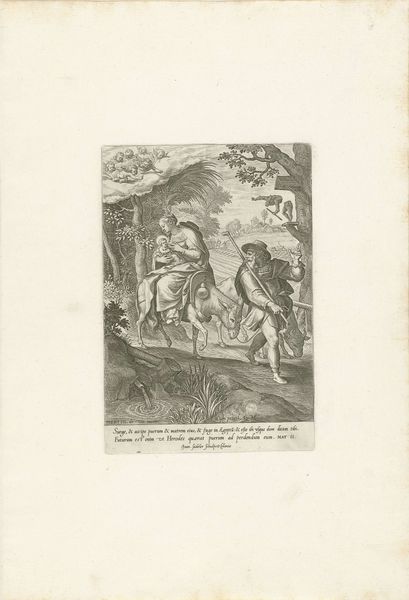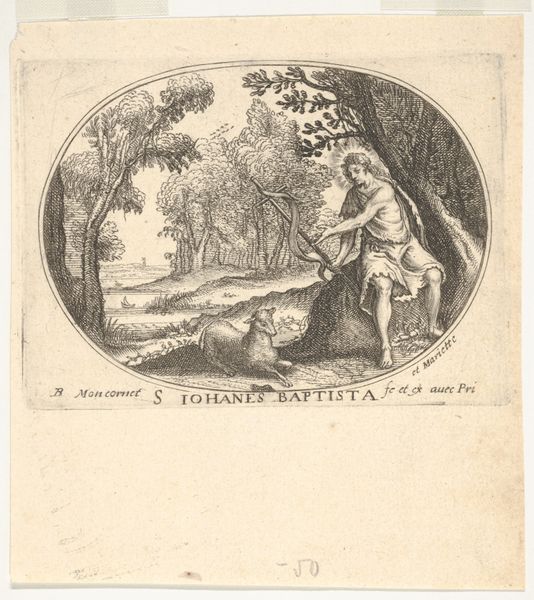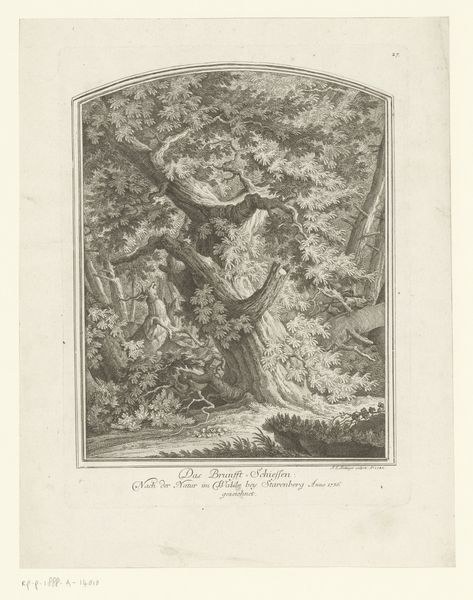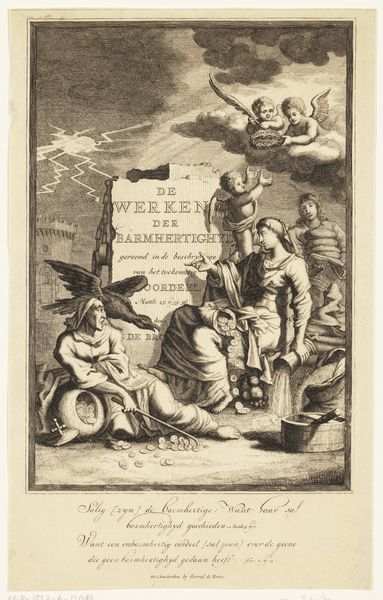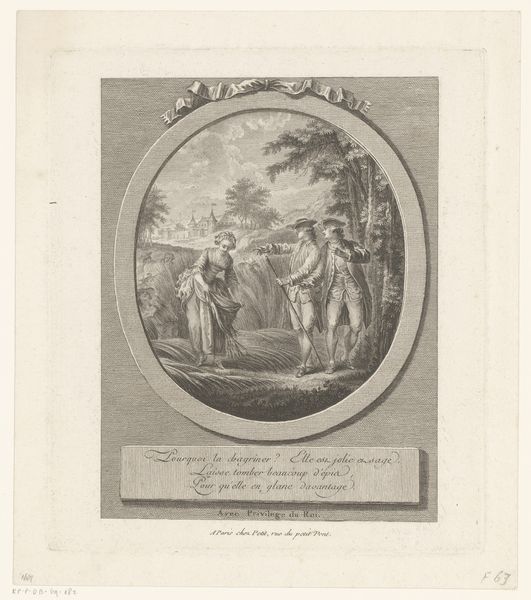
print, engraving
#
allegory
#
baroque
# print
#
landscape
#
figuration
#
line
#
history-painting
#
engraving
Dimensions: height 208 mm, width 170 mm
Copyright: Rijks Museum: Open Domain
Editor: This print, "Twee vrouwen met kaart van Rusland en het Perzische Rijk," from 1755, by Jan Caspar Philips, caught my eye. It's got this very formal, almost staged feeling. Two women are holding up a map, and everything seems to be symbolic. How do you interpret this work? Curator: Well, considering it's from 1755, during a time of significant geopolitical maneuvering, we must see it as more than just a map. How does it make you feel considering who controlled land at the time? What’s being represented – power, perhaps? What did journeys into Russia and Persia mean? Editor: Power… yes, definitely. The way the women are posed, almost like they're presenting something important, and the scale of the map... it makes me think about trade routes and colonial ambition. Curator: Exactly! Now consider that the women themselves are allegorical figures, representing perhaps, different political entities, different philosophical views or systems of social control. This was made during the rise of the British Empire, which saw significant land grabs around the world. The map then becomes a charged object, representing potential conflict but also new commercial prospects with Russia and Persia. It’s not neutral; it’s embedded in the socio-political fabric of its time. Editor: So, reading the map then requires understanding the complex relationship between nations, social identities, power structures, and colonial desires at this specific historical moment? Curator: Precisely. This print isn't simply decorative. It demands we consider its context to really unpack what Philips was trying to communicate about the relationship between exploration, power, and identity during a transformative period. It's deeply intersectional in its meaning. Editor: I never thought a map could be so politically charged! I'll definitely look at historical art with a wider lens now, understanding not just what’s depicted, but the deeper issues at play. Curator: Excellent! Remember that art often acts as a visual record of cultural ideologies, open for us to interrogate and analyze.
Comments
No comments
Be the first to comment and join the conversation on the ultimate creative platform.
